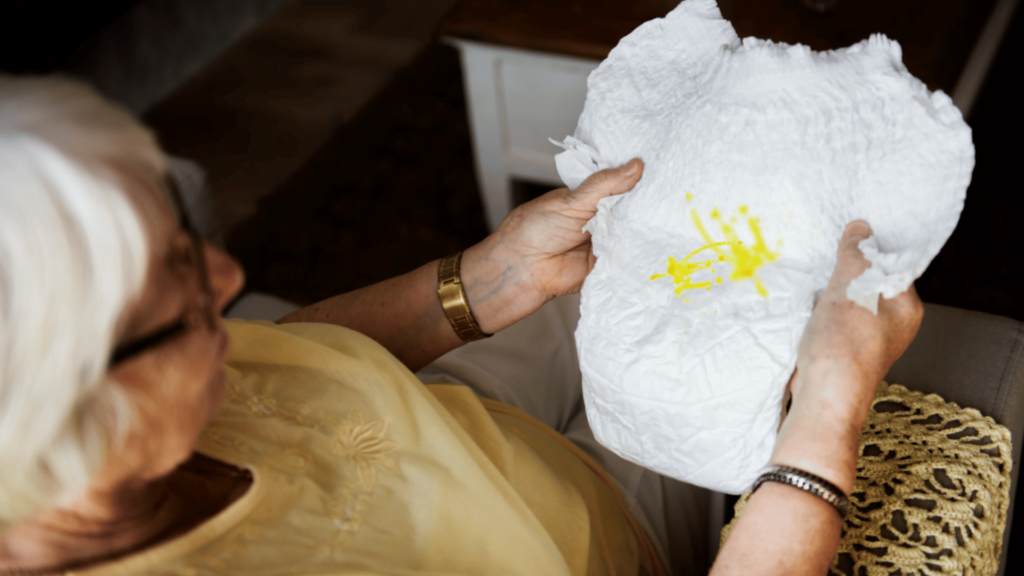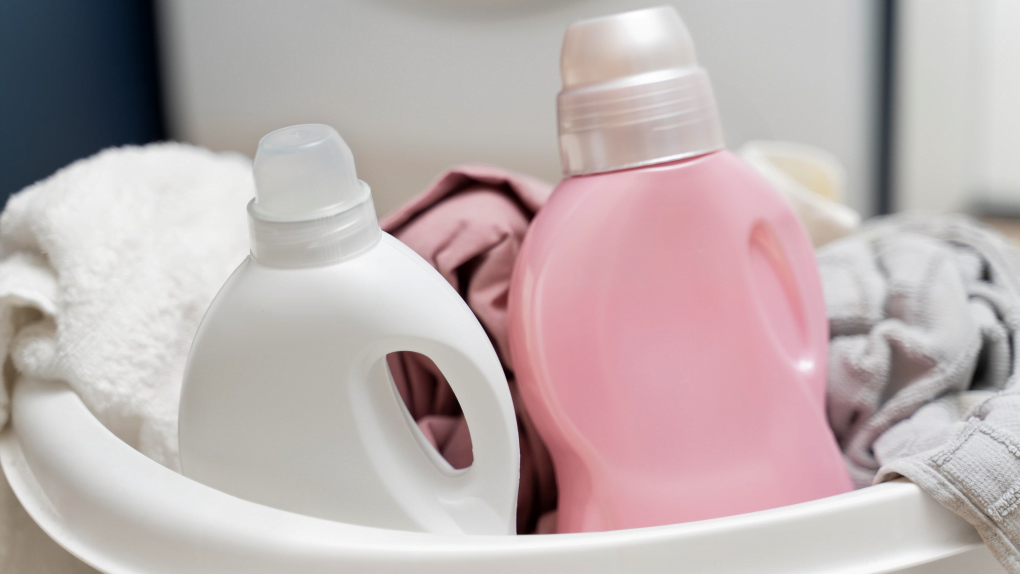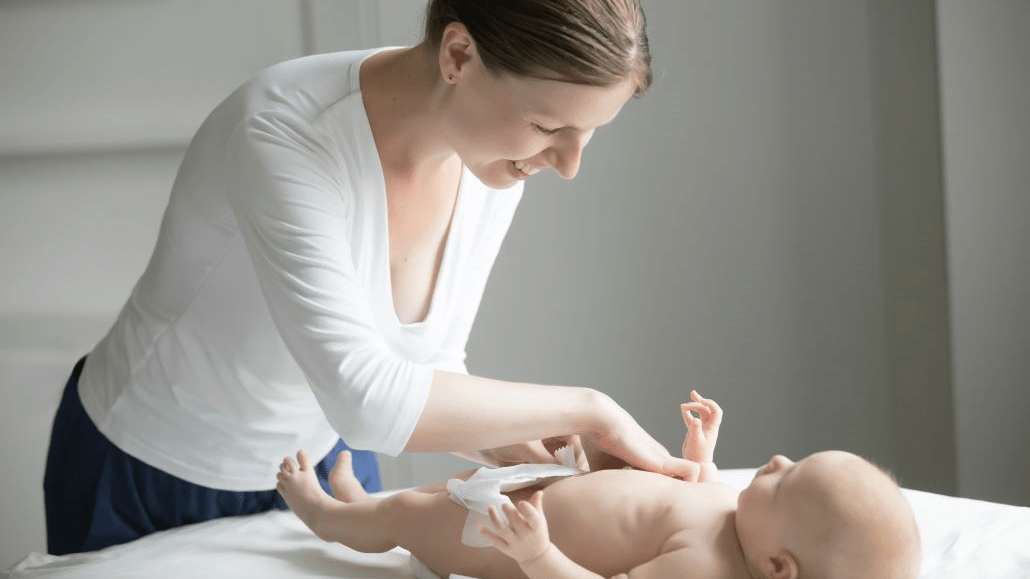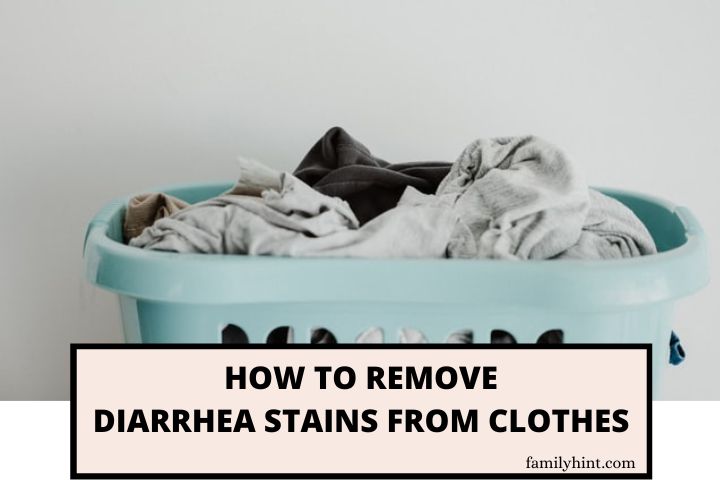
Dealing with stains on cloth diapers can be frustrating and time-consuming for many parents. No matter how diligent they are at maintaining their baby’s hygiene, those stubborn stains always find a way to linger on the cloth. But fear not, for there are effective ways on how to remove stains from cloth diapers and keep them looking fresh and stain-free.
One of the most efficient methods to remove stains from cloth diapers is by exposing the cloth to direct sunlight. Not only does this natural method improve the appearance of the diapers, but it also ensures optimal cleanliness. Proper stain removal is crucial to prevent bacterial growth and eliminate unpleasant odors, especially when dealing with toddler poop, which sticks differently to cloth than newborn waste.
Indeed, the lingering presence of a rusty brown stain on your cloth diapers can be unsightly and bothersome. Therefore, finding effective ways to remove and prevent stains can significantly enhance the overall experience of using cloth diapers. In this article, we will discuss various methods and tips to help you get stains out of cloth diapers effectively.
What Are the Common Causes of Diaper Stains?
Diaper stains are a common frustration for parents who diligently ensure their babies are well-cared for in clean and fresh diapers. These stains can be unsightly and often difficult to remove, but understanding the common causes can help parents prevent and address them effectively.
Here’s what you need to know about the different types of diaper stains:
1. Poop Stains
One of the most prevalent causes of diaper stains is poop. Infant feces can vary in consistency and sometimes contain intensely pigmented substances that may leave behind stubborn stains. Breastfed baby poop, for instance, often contains enzymes that can create yellowish or greenish stains on cloth and disposable diapers. Solid foods can further complicate matters as the baby’s stool changes color and content, leading to potential stains.
To tackle poop stains effectively, prompt action is vital. Start by removing any excess fecal matter using a diaper wipe or toilet paper before disposing it appropriately. If using cloth diapers, rinse any residual poop under cold running water. Treating the stained area with a pre-wash stain remover or applying a paste of baking soda and water can help lift the stains before proceeding with the regular washing routine. Alternatively, soaking cloth diapers in a solution of oxygen bleach and warm water for a few hours or overnight can also prove effective in stain removal.
2. Urine Stains
Urine stains, while not as challenging as poop stains, can still leave unwanted marks on diapers. Baby urine contains substances, such as uric acid, that can result in discoloration if not addressed promptly. Urine stains are more commonly observed in cloth diapers, as disposable diapers typically incorporate absorbent materials that limit the extent of staining.
To combat urine stains, ensuring frequent diaper changes is crucial. Regular and prompt changing of urine-soaked diapers minimizes the extent of staining and prevents the urine from reacting with the diaper fabric.
When washing cloth diapers, using detergents with enzymes designed explicitly for removing protein-based stains, like urine, can aid in stain removal. Additionally, incorporating baking soda or vinegar into the wash cycle can help neutralize any lingering odor and prevent stain-settling.
3. Detergent Residue
Another cause of diaper stains is detergent residue. The use of excessive or improper detergents for washing cloth diapers can result in residue accumulation over time. This residue can manifest as stains on the diaper fabric, resulting in an unattractive appearance.
To prevent detergent residue stains, selecting a detergent specifically formulated for cloth diapers is important. These detergents are typically free from fragrances, enzymes, and optical brighteners that can lead to build-up. Additionally, using the recommended amount of detergent and avoiding fabric softeners or dryer sheets that can contribute to residue formation can also aid in preventing stains.
Tips on How to Wash Your Cloth Diapers
Cloth diapers are a great way to save money and help the environment, but they can be a pain to wash. You need a washer that can handle cloth diapers, and you have to do it right to avoid stains or leaks.
Here are some tips on how to wash your cloth diapers:
- Wash your diapers every two days or less. This will prevent stains from setting in.
- Use warm (not hot) water when washing your cloth diapers. Hot water can cause shrinkage and fading of fabrics and stiffening of elastics, which may make it harder for the baby to put on his/her bum.
- Use mild detergent with no fabric softeners or bleach because these ingredients can cause irritations and rashes for babies and you.
- Always rinse well before each wash cycle so no residue from previous loads is left behind. This will help prevent the build-up of soap scum on fabrics that could lead to staining problems later on down the road if not cleaned out before washing new loads of laundry with them.
8 Effective Ways to Remove Stains from Cloth Diapers

Removing stains from cloth diapers can be a common issue many parents face. However, with the right approach and simple steps, you can effectively remove stains and keep your cloth diapers clean and fresh.
Here is a detailed guide on how to remove stains from cloth diapers using various cleaning methods:
1. Using Vinegar
Vinegar can be used as a fabric softener or bleach alternative for removing stains from cloth diapers. It is an excellent natural stain remover for cloth diapers. Its mild acidity helps break down and dissolve various stains, such as urine, feces, and formula residue.
Here are the steps to use vinegar to remove cloth diaper stains:
- Start by rinsing the stained cloth diapers in cold water as soon as possible. This helps to remove any solid particles and prevent the stain from setting.
- Fill a sink or a large basin with warm water and add about half a cup of white vinegar. Soak the stained cloth diapers in the vinegar solution for at least 30 minutes.
- After soaking, gently rub the stained areas with your fingers or a soft brush to help loosen the stain.
- Drain the vinegar solution and rinse the diapers thoroughly with clean water.
- Proceed to wash the cloth diapers as usual, following the manufacturer’s instructions. The vinegar helps to neutralize odor and disinfect the diapers.
2. Using Hydrogen Peroxide
Hydrogen peroxide is a powerful oxidizing agent that can lift stubborn stains from cloth diapers. When applied to the affected areas, hydrogen peroxide reacts with the stains, causing them to bubble and break apart. Its stain-removing action is beneficial for tackling tough and set-in stains.
Here are the steps to use hydrogen peroxide to remove cloth diaper stains:
- For fresh stains on cloth diapers, rinse them in cold water immediately to remove any solid waste.
- Pre-treat the stained areas by pouring a small amount of hydrogen peroxide directly onto the stains.
- Gently rub the hydrogen peroxide into the stained areas using your fingers or a soft brush. This helps to break down the stain and remove it from the fabric.
- Let the hydrogen peroxide sit on the stain for 10-15 minutes.
- Rinse the cloth diapers thoroughly with cold water to remove any residue before proceeding to the washing step.
3. Using OxiClean
OxiClean is a commercial stain remover that contains enzymes and oxygen-based bleach. Its enzymatic action targets organic stains, such as those from baby food, and helps to break them down effectively. Oxiclean is known for restoring cloth diapers to their original whiteness and freshness.
Here are the steps to use Oxiclean to remove cloth diaper stains:
- If the stains on your cloth diapers are stubborn and refuse to come out with vinegar or hydrogen peroxide, Oxiclean can be a great alternative.
- Dissolve a scoop of Oxiclean in warm water according to the instructions on the packaging.
- Submerge the stained cloth diapers in the Oxiclean solution and let them soak for about one hour.
- After soaking, drain the Oxiclean solution and rinse the diapers with clean water.
- Follow up with a normal wash cycle using your laundry detergent, ensuring you use the appropriate water temperature recommended for your cloth diapers.
4. Applying Direct Sunlight
Sunlight is a natural and cost-free way to remove stains from cloth diapers. The sun’s ultraviolet rays have natural bleaching properties that can fade and eliminate stains. After thoroughly washing the cloth diapers, dry them outside in direct sunlight. The sun’s rays will work to naturally bleach and disinfect the diapers, leaving them fresh and stain-free.
Here are the steps for utilizing direct sunlight to get rid of cloth diaper stains:
- After pre-treatment and washing, if any stains persist, air-dry the cloth diapers outside in direct sunlight.
- Place the cloth diapers where the sun’s rays can directly hit the stained areas.
- Leave the cloth diapers in the sunlight for a few hours, as the sun’s ultraviolet rays have a natural bleaching effect that helps to remove stains.
- Check the diapers periodically and rotate them to ensure all sides receive sunlight exposure.
- Once the stains have faded or disappeared, retrieve the cloth diapers and proceed with the final laundering step as usual.
5. Using Lemon Juice
Lemon juice is a great stain remover for cloth diapers because it’s natural and inexpensive. Its citric acid content acts as a gentle yet powerful bleach and natural solvent. When applied to cloth diaper stains, lemon juice diligently breaks down and dissolves various blemishes caused by food spills or organic substances. Its non-toxic and eco-friendly characteristics make it a reliable and safe choice for treating delicate baby garments.
Here are the steps to use lemon juice to remove cloth diaper stains:
- Begin by rinsing the soiled cloth diaper under cold water as soon as possible. This will help prevent the stain from setting in.
- Squeeze fresh lemon juice onto the stained area of the cloth diaper. You can cut a lemon in half and directly squeeze the juice onto the fabric or pour lemon juice from a bottle onto the stain.
- Rub the lemon juice into the stain with a clean cloth. Make sure to cover the entire affected area.
- Allow the lemon juice to sit on the stain for 15-20 minutes. This will give it enough time to penetrate and break down the stain.
- Rinse the cloth diaper thoroughly with cold water to remove the lemon juice and any loosened stain particles.
- Once rinsed, you can wash the cloth diaper as you normally would. Follow the manufacturer’s instructions for your specific cloth diaper brand, using the appropriate detergent and water temperature recommended.
- After washing, closely inspect the cloth diaper for any remaining stains. Repeat the lemon juice treatment or try an alternative method if the stain is still visible.
6. Using Bac-Out Stain + Odor Remover
Bac-Out Stain + Odor Remover is a great stain remover for cloth diapers. This product is made with plant-based cleaners, so it’s safe for the baby and the environment. It’s also free of chlorine bleach and ammonia. The Bac-Out Stain + Odor Remover works quickly, essential for dirty laundry. You can use this product on all stains, including breast milk and formula. It’s even safe to use on cloth diapers.
Here are steps to get rid of cloth diaper stains using Bac-Out Stain + Odor Remover:
- Begin by spot-treating the stained area with Bac-Out. Apply the product directly to the stain, covering it completely.
- Gently rub the Bac-Out into the stain using a clean cloth or your fingers. Work the product in, allowing it to penetrate the fabric.
- Let the Bac-Out sit on the stain for approximately 30 minutes to an hour. This will give it enough time to break down the stain particles.
- After the designated time, rinse the cloth diaper thoroughly with cold water to remove the Bac-Out and any loosened stains.
- Proceed to wash the cloth diaper as usual, following the manufacturer’s instructions.
- Inspect the cloth diaper after washing to check if the stain has been completely removed. If necessary, repeat the Bac-Out treatment or try another stain removal method.
7. Using Buncha Farmers Stain Stick
The Buncha Farmers Stain Remover is a natural and effective stain remover that is safe for use on cloth diapers. This stain stick is made with all-natural ingredients such as saponified vegetable oils, water, and eucalyptus essential oil, making it suitable for removing tough stains from cloth diapers.
Here are the steps to effectively remove stains from cloth diapers using the Buncha Farmers Stain Stick:
- Before washing the cloth diapers, it is important to pre-treat the stained areas. Wet the stained portion of the cloth diaper with water, ensuring it is saturated.
- Take the Buncha Farmers Stain Stick and rub it gently on the stain in a circular motion. Ensure that the stained area is thoroughly covered with the stain stick.
- Once you have applied the stain stick, let it sit for at least 15 to 30 minutes. This allows the stain stick to penetrate and break down the stain.
- After the designated time, proceed to wash the cloth diapers as usual. Ensure you follow the manufacturer’s instructions for washing and rinsing the diapers.
- Once the washing cycle is complete, inspect the cloth diapers for any remaining stains. If the stains are still visible, repeat pre-treating and washing until the stains are completely removed.
8. Using Breastmilk as a Stain Remover
Breastmilk, a natural substance, can also be used as a stain remover for cloth diapers. The enzymes and antibodies in breast milk help break down the proteins in stains, making it an effective method for stain removal. Also, it’s safe and gentle on cloth diapers, making it a great option for baby care.
Here are the steps to effectively remove stains from cloth diapers using breastmilk:
- Start by pre-treating the stained portion of the cloth diaper. Wet the area with warm water and gently rub the stained fabric together to loosen the stain.
- Pour a small amount of breastmilk directly onto the stain. Make sure that the stained area is completely covered with breastmilk.
- Allow the breastmilk to sit on the stained area for at least 30 minutes. This gives the enzymes in breast milk enough time to break down the stain.
- After the designated time, rinse the cloth diaper with warm water to remove the breast milk. Then proceed to wash the cloth diaper as usual, following the manufacturer’s instructions.
- After completing the washing cycle, inspect the cloth diapers for any remaining stains. If the stains are still visible, repeat pre-treating and washing until the stains are entirely removed.
How to Prevent Cloth Diapers from Staining?

Cloth diapers are a great alternative to disposables and can save money over time. Unfortunately, they can also stain easily if you don’t care for them properly. The good news is that it’s easy to prevent stains from setting in and ruining your diapers. Here are a few tips for keeping your cloth diapers clean and stain-free:
- Change your baby frequently, especially when they have diarrhea or are sick. This helps prevent rashes and other skin irritations that can lead to more serious problems like yeast infections or urinary tract infections.
- Use the proper detergent. Not all laundry detergents are created equal, so ensure you use the right kind for your wash cycle. If you have hard water, try using a detergent with built-in stain removers or enzymes that help get rid of stains naturally.
- Wash your cloth diapers every 2-3 days instead of every day. Cloth diapers need more time to dry out between uses than disposables, making them less likely to develop odors and stains if you give them room to breathe between washes.
- Double rinse after each wash cycle so that no build-up remains in your diaper pail or washing machine before you start another load of laundry. This will help prevent stains and odors from developing in your diaper pails and keep lint from collecting on your clothes.
Frequently Asked Questions
Q: How can I remove stains from cloth diapers?
A: There are several ways to remove stains from cloth diapers. You can use a stain remover, sun bleaching, or soak them in a bleach solution.
Q: What is the best stain remover to use on cloth diapers?
A: Many stain removers are available in the market, specifically designed for removing stains in cloth diapers. Look for ones that are safe for the fabric and effective in removing tough stains.
Q: Can I use bleach to remove stains from cloth diapers?
A: You can use bleach to remove stains from cloth diapers. However, following the manufacturer’s instructions and diluting it properly is important to avoid damaging the fabric.
Q: How does sun bleaching help in removing stains from cloth diapers?
A: Sun bleaching is a natural way to remove stains from cloth diapers. Lay them out in the sun; the UV rays will help break down the stains and freshen up the fabric.
Q: What should I do if the stains don’t come out after sun bleaching?
A: If the stains don’t come out entirely after sun bleaching, try using a stain remover or soak them in a bleach solution as an additional step.
Q: How can I prevent stains on cloth diapers?
A: To prevent stains on cloth diapers, it is recommended to rinse them immediately after use, use diaper liners, and wash them in warm water. This will help ensure that stains won’t set in and make them easier to remove during diaper laundry.
Q: Are certain types of stains harder to remove from cloth diapers?
A: Yes, certain types of stains, like those from newborn poop or color stains, may be tougher to remove from cloth diapers. It may require a combination of stain remover, sun bleaching, or soaking in a bleach solution.
Q: How can I get stains out of cloth diapers if other methods have yet to work?
A: If other methods have yet to work, you can use a natural stain remover or consult with other cloth diapering parents to see what methods they have found effective in removing stubborn stains.
Q: How do I incorporate stain removal into my cloth diaper wash routine?
A: You can incorporate stain removal into your cloth diaper wash routine by pretreating any stained diapers before washing them. This can be done by applying a stain remover or soaking them in bleach before adding them to your regular diaper laundry.
Q: Is washing my cloth diapers in warm water necessary to remove stains?
A: Washing your cloth diapers in warm water can help remove stains, but it is not always necessary. You can also use cold water for washing, but ensure that your detergent is suitable for cold water washing to get stains out of your cloth diapers effectively.
Conclusion
In conclusion, removing stains from cloth diapers is important for maintaining hygiene and prolonging their use. Acting swiftly when dealing with stains is crucial, preventing them from becoming more stubborn and difficult to remove. Sunning cloth diapers is a simple and natural technique that can effectively bleach out stains with the help of the sun’s UV rays.
Pre-treating tough stains before washing can significantly improve the chances of successful stain removal. Whether using specialized stain removers or household items like lemon juice or baking soda, a little pre-treatment can go a long way.
Regular and proper stain removal enhances the appearance of cloth diapers and ensures they remain safe and clean. By following these tips and incorporating stain removal into your diaper care routine, you can keep your cloth diapers in excellent condition and provide a comfortable and hygienic experience for your little one.
For more valuable content like this, join our community at the Family Hint today!



